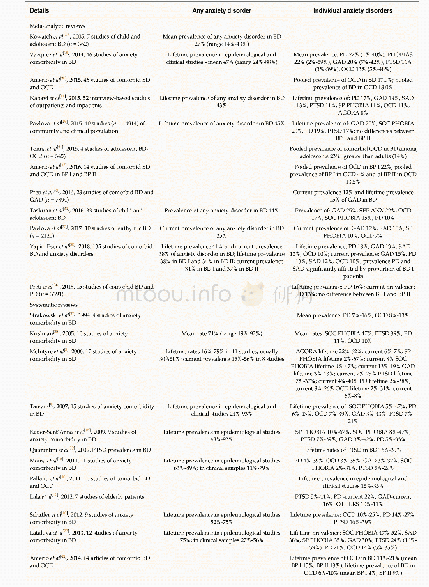《Table 1 ANCHOR-based assessments of disorder among MHC class II peptide epitopes》
 提示:宽带有限、当前游客访问压缩模式
提示:宽带有限、当前游客访问压缩模式
本系列图表出处文件名:随高清版一同展现
《High-level intrinsic disorder explains the universality of CLIP binding to diverse MHC class Ⅱ variants》
To ensure that there was no fundamental difference between primary MHC class II peptide groove binding and the binding of the TcRs to the polymorphic edges of the groove,we generated a comparison of the CLIP intrinsic disorder with the intrinsic disorder rate among 501 MHC class II bindingpeptides obtained from the immune epitope database(www.iedb.org).Because all of a given peptide epitope and CLIP represent binding sites for another protein,MHC class II,we also employed the ANCHOR algorithm specifically designed to assess potential intrinsic disorder-based protein binding sites.The ANCHOR algorithm determines binding energy favorability for disorder regions if there is an interaction with another protein.Essentially,the disorder determination is more constrained by the requirement of a significant energy trough upon binding.Nevertheless,CLIP remains unusual:339out of 501 epitope peptides were completely ordered,with no amino acids contributing to the disorder,which is not surprising given the expected high level of chemical bond-specificities necessary to maintaintheepitope,allele-specific MHCII binding interaction(Table 1).This contrasts with the ANCHOR assessment of CLIP disorder,in which 15 of 24 amino acids constitute intrinsically disorderbased binding.
| 图表编号 | XD0010729600 严禁用于非法目的 |
|---|---|
| 绘制时间 | 2018.01.01 |
| 作者 | Vladimir N Uversky、Yaping N Tu、Onyekachi Nwogu、Shanitra N Butler、Michael Ramsamooj、George Blanck |
| 绘制单位 | Department of Molecular Medicine, Morsani College of Medicine, University of South Florida,and Immunology Program、Department of Molecular Medicine, Morsani College of Medicine, University of South Florida,and Immunology Program、Department of Molecular Med |
| 更多格式 | 高清、无水印(增值服务) |
查看“Table 1 ANCHOR-based assessments of disorder among MHC class II peptide epitopes”的人还看了
-

- 表2 性病门诊男性就诊者艾滋病相关知识回答情况Table 2 Correct awareness of HIV/AIDS-related knowledge among male clients in STD clinics
-

- Table 1 Prevalence of anxiety disorder comorbidity in bipolar disorder:Evidence from meta-analytic and systematic review





